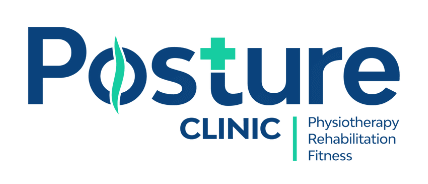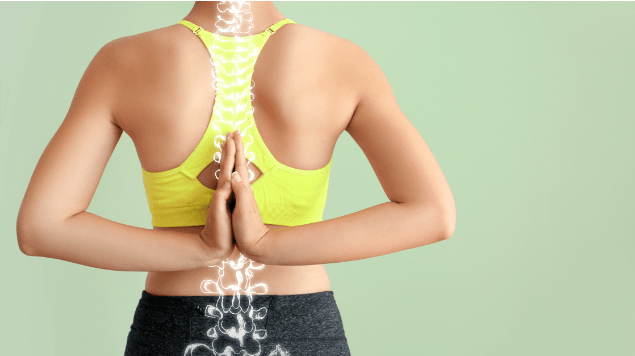Postural correction is a popular way of treating any kind of back, neck, shoulder or knee pain. If you're suffering from chronic pain in these areas, you may wish to consider this form of treatment. When you go to your local posture correction centre, they'll carry out an X-Ray examination. They may even do a motion analysis system (MAS) scan to check your posture when standing up straight on two feet. The next step would be to visit the Posture Clinic where we will provide physical therapy sessions. These may include spinal manipulation or other types of movement therapies, such as massage therapy. The underlying idea is to relieve some of the pressure and discomfort caused by poor alignment in bones while sitting or standing upright.
With the , you will not experience the encountered due to . Only can help in , and . are crucial to a healthy , , and . can weaken and prevent of the body. can only happen through a , not a or a belt. They are merely marketing gimmicks. What you need is a expert who can rectify the by proper assessment, , and treatment.
What is postural correction?
Postural correction is a type of treatment for people who suffer from any kind of pain caused by a misaligned spinal cord. It involves a series of exercises and treatments that are designed to help you get better. Posture correction can help you live a pain-free life.
What is posture?
Posture refers to the way you hold your body when you are standing, sitting or lying down. It can be dynamic (when you are moving) or static (when you are standing still). Posture has a direct bearing on factors, such as genetics, environment and lifestyle. Posture correction is one of the most common treatments offered at Posture Clinic. Our therapeutic program corrects any posture problems caused by injury or disease. It can also help people with chronic pain who have not been able to find relief through other forms of treatment.
How is pain and posture correction related?
As with many other chronic conditions, pain and posture are both caused by the same factors. Our posture experts will recommend a course of posture correction to address the pain. Posture correction is an easy-to-understand process that uses massage therapy to correct poor muscle tension, so that your body is able to function properly again with proper posture. The trained posture expert at Posture Clinic will work on specific areas where there is tension or excess pressure on muscle tissue that has caused changes in its shape or length, triggering the pain.
How to lead a pain-free life with good posture
Posture correction is not a cure for back pain, but it can relieve pain and improve your quality of life. People with good posture have less discomfort and fatigue than those who slouch or suffer from poor posture. One of the most important aspects of having good posture is being able to stand up straight without discomfort. This involves using your core muscles to help keep you upright while avoiding pressure on the lower back by lifting your chest as high as possible while lowering the shoulders away from your ears.
You can also keep good posture at work by sitting up straight (avoiding slouching), leaning back slightly in a chair with feet flat on floor, keeping arms and legs uncrossed while typing or using a computer mouse. For pain-free office life, a proper computer posture is the best way out. Similarly, you require a proper posture for sleeping to ensure that you don't wake up with back or neck pain.
Postural correction is a term used to describe several types of treatment that are given to patients who have long-term back or neck pain.
It's important to note that not all chiropractors perform this type of treatment, so it's important to do your research before choosing a healthcare provider. Here is where Posture Clinic scores because we have Dr Pooja Jhade who is certified by the American Posture Institute. The goal of posture experts is to restore the normal alignment and range of motion in the spine, allowing patients greater mobility and flexibility in their daily lives. Good and bad posture are the difference between painless living and painful existence.
Practising good posture, such as good running posture, proper head posture, correct squat posture and correct sitting, can help to reduce back pain and other problems associated with poor posture. The correct sit up posture is important for longevity and health. The correct walking posture can prevent injury. Having good posture for height can also be helpful in preventing back pain and other problems associated with poor posture.
Similarly, Kyphotic lordotic posture correction is the process of correcting bad postures by making small changes in your daily habits and activities. Posture Clinic improves your posture using kyphotic lordotic posture correction techniques, such as good seated posture (correct knee posture) or proper walking posture (correct knee).
Several different types of motion analysis systems and treatments can be used, depending on the diagnosis.
The type of system used depends on the diagnosis and the patient's condition. The system can be used to help diagnose the patient's problem and determine the best treatment for their conditions. It can also be used to help monitor their progress throughout treatment.
Treatments may include spinal manipulation, short-term neuromuscular electrical stimulation, guided exercise, massage therapy and heating and cooling therapy.
There are many treatments that may be recommended, depending on the type of posture problem you are experiencing. Spinal manipulation is a treatment that uses a hands-on approach to realign the spine. It's often done by a chiropractor or physical therapist who applies pressure to specific areas of your back to relieve pain or increase mobility in your joints and muscles. Short-term neuromuscular electrical stimulation uses a small device that delivers electrical pulses to the muscles in the back, neck or shoulder.
This helps them relax so they can be more flexible during physical therapy exercises aimed at correcting poor posture habits, such as slouching over desks or carrying around heavy bags all day long! Guided exercise is similar but involves working with an expert who teaches you how to do specific exercises while they supervise your progress. They help correct any misalignments as soon as possible before any major problems arise!
Massage therapists specialise in deep tissue massage techniques that target trouble areas like tense muscles caused by sitting down too long without taking breaks throughout workdays (which could lead someone into developing bad habits such as hunching over computers all day long). They also use heat packs/ice packs depending on what type of soreness needs attention most urgently after prolonged periods spent hunched over typing.
Patients who choose posture correction should expect to participate in at least two sessions of treatment a week over several weeks or months, depending on the severity of the pain or injury. It is important to note that patients who choose posture correction should expect to participate in treatment over several weeks or months.
What are the common posture mistakes and how to remedy them through exercises
When you are sitting down, your head should be in line with your spine. If it's not, it means you have a forward head posture that can lead to neck and back pain as well as headaches. To correct this problem, you need to do some exercises that will help strengthen the muscles in your upper body. These include chin tucks, wall squats and plank holds, among others.
To qualify for treatment at a local posture correction centre, you will need an X-ray taken of your body to help show how badly your bones are misaligned while standing or sitting.
X-rays are used to help determine the severity of the problem. They can show the alignment of bones in the spine, neck and shoulder. A scan may be ordered if you have pain from arthritis or injury; if there is a history of back pain that doesn't improve with treatment; if it's hard for you to sleep because of aches and pains in your joints; or if other conditions suggest that spinal problems contribute to your discomfort (like migraines).
Myostatic tape (adjustable compression) and orthoses (for example, rigid supports) are sometimes prescribed with postural correction so that you might be helped for long-term pain relief.
Orthoses are the most common form of treatment for musculoskeletal pain. Orthoses are usually prescribed as a way of helping you adapt to your postural problems. This can be done by either taking pressure off the affected area or putting some kind of support over it. There are two main types of orthoses: myostatic taping and rigid supports (such as back braces). Myostatic taping involves using elastic tape to apply gentle pressure over the problematic area, which may help reduce pain and inflammation.
Rigid supports have different uses depending on which part of your body they target, but they all provide support without restricting movement too much. They're often made from hard plastic materials, such as polypropylene or polycarbonate. However, some manufacturers also make them from softer materials like silicone rubber or leather-like materials that look more comfortable than other types on skin contact areas where there might be sensitive nerve endings (for example around joints in fingers).
The person who prescribes an orthotic device will decide what type is best suited for your needs based upon their own judgement based upon how long you've been experiencing symptoms; any medical history relating to previous injuries; how long those symptoms lasted after injuring yourself; where exactly those injuries occurred; any tests results conducted during diagnosis - including X-rays etcetera - so they can see what damage has occurred within these areas.
Postural correction is a popular way of treating back, neck or shoulder pain
Postural correction involves several different types of motion analysis systems and treatments, including: The McKenzie Method - This uses an adjustment table. The doctor will adjust your spine while you lie on the table. This helps loosen muscles that may be causing your pain and stiffness in your joints or bones (vertebrae). Adjustments with an instrument called a "polarity stick" - Your doctor will use this tool to help reduce pressure from nerves that send signals from one part of your body (such as your neck) to another part such as the brainstem or spinal cord where they can cause discomfort or even severe pain.
Conclusion
You could write down these keywords on your corkboard, and look at it every time you work: "Good body posture, good walking posture, proper walking posture, correct running posture, proper running posture". Postural correction might sound like an intimidating process, but it is actually quite an effective treatment for many types of body pains.
If you are frustrated by chronic pain and want to regain your quality of life, try visiting a posture correction centre, such as Posture Clinic in HSR Layout, Bangalore. The facility will assess whether this type of treatment is right for you and put together a personalised plan that can help alleviate your discomfort over time.

